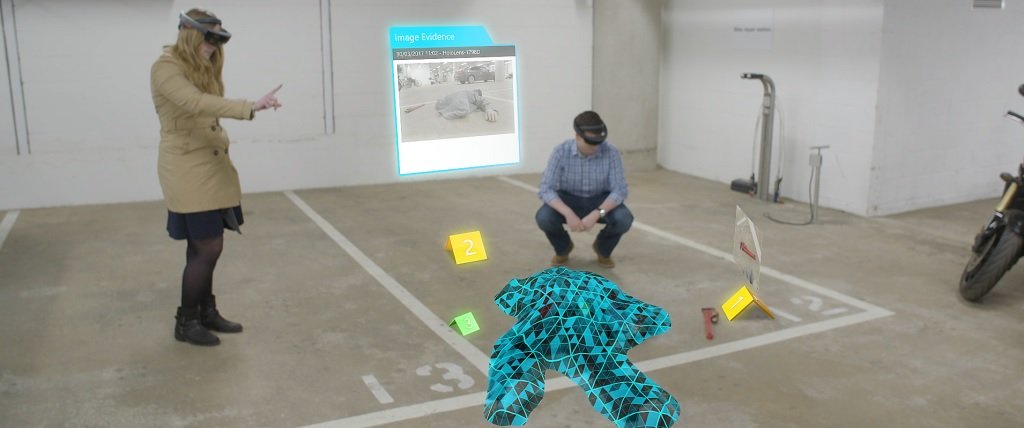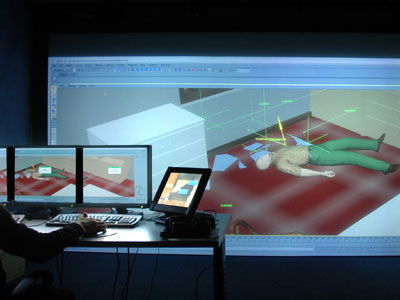
🧑⚖️ לראות את זירת הפשע – כאילו הייתם שם
מחקר חדש של אוניברסיטת דרום אוסטרליה, שבוצע בשיתוף חוקרים, עורכי דין, שוטרים ומומחי זיהוי פלילי, הוכיח שלשימוש בטכנולוגיית מציאות מדומה יש השפעה מדהימה על דיוק ההכרעה של חבר המושבעים.במקום להסתפק בתמונות שטוחות, הנסיינים במחקר "הובלת המושבעים לזירת הפשע" לבשו משקפי VR, חוו את הזירה במרחב תלת־ממדי, והצליחו להבין בצורה ברורה הרבה יותר את מיקומי הרכב, הקורבן והאירועים בזמן אמת.
🎯 דיוק שיפוטי גבוה פי 9.5
במחקר, המשתתפים שצפו בזירת תאונת "פגע וברח" במציאות מדומה היו פי 9.5 יותר מדויקים בהכרעה לעומת אלו שראו רק תמונות. 95% מהם קבעו את אותה פסיקה: "מוות כתוצאה מנהיגה מסוכנת". לעומתם, הקבוצה שצפתה רק בתמונות התפצלה – כמעט חצי-חצי – בין נהיגה מסוכנת לנהיגה רשלנית.

🧠 פחות מאמץ, יותר זיכרון
לדברי ד"ר אנדרו קנינגהם, ראש המרכז למחקר במציאות מדומה באוניברסיטת דרום אוסטרליה:
"משתתפים שחוו את הזירה דרך VR הצליחו לזכור טוב יותר את מיקום הרכב ביחס לקורבן – זה משהו שכמעט בלתי אפשרי לדמיין דרך תמונות סטטיות."
ואם זה לא מספיק, המחקר גם הראה ש-VR דורש פחות מאמץ קוגניטיבי לצורך שחזור האירוע – מה שעשוי להוביל לתוצאות הוגנות יותר, גם בתיקים מורכבים במיוחד.

📍 הביקור בזירת הפשע – כבר לא חובה
ד"ר קרולין רייכהרצר, שהובילה את המחקר, ציינה כי ביקור פיזי בזירה הוא עדיין כלי חשוב, אך לעיתים אינו מעשי:
"האתרים משתנים, ההוצאות גבוהות, ולא תמיד ניתן לשחזר את הסצנה המקורית. מציאות מדומה עוקפת את כל המכשולים האלה."
🕰️ כבר היה בשימוש – והצליח
כבר ב-2019 נעשה שימוש ראשוני בטכנולוגיית VR במשפט מלחמה בגרמניה, כששוחזרה סצנה ממחנה ההשמדה אושוויץ לטובת הצגת המקרה בפני השופטים. עכשיו, ב-2025, נדמה שהטכנולוגיה הזו כבר לא גימיק – אלא חלק מהעתיד של מערכת המשפט.
👓 אז מה זה אומר על העתיד?
אנחנו, המומחים למציאות מדומה בישראל עם ניסיון של מעל 13 שנה בתחום, מאמינים שהשילוב בין VR לצדק הוא לא חלום – אלא הצעד הבא באבולוציה של מערכת המשפט, החינוך, הרפואה והעולם כולו.אנחנו מקימים חדרי מציאות מדומה מתקדמים, מפתחים תכנים אינטראקטיביים ומביאים את הדור הבא של חוויות מציאות מדומה לכל תחום – כולל משפט וחוק.בין אם אתם משרד ממשלתי, עורך דין או גוף בטחוני – צרו איתנו קשר וגלו איך אפשר להפוך כל זירה, אירוע או תרחיש – לחוויה מוחשית ומשכנעת שיכולה להציל חיים ולעשות צדק אמיתי.
עמית קיסר – קיסר מציאות מדומה👑 מומחי VR בישראל משנת 2013🌐 www.caesarvr.com | www.vr-glasses.co.il📞 פנו אלינו והצטרפו למהפכה


